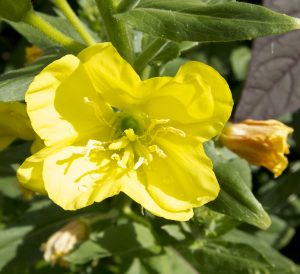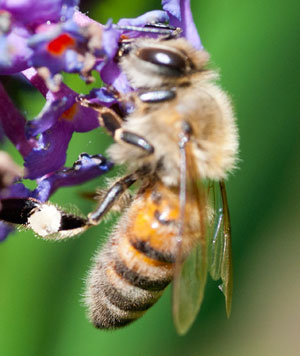The flowers are listening !

Sound is part and parcel of life. The nervous system of animals are attuned to it; it serves to inform them of danger, of food, of mates etc. We do not think of plants are being sensitive to or responsive to sound - though some people are convinced that talking to plants helps them to grow better (this might be due to an enhanced level of carbon dioxide near to the plants). However, some recent studies by Professor Lilach Hadany (of Tel Aviv University) and her colleagues suggest that some plants can respond to certain sounds that bees produce.
Professor Hadany’s team studied the response of the evening primrose (Oenothera drummondii) to the sounds / vibrations of pollinators’ wings (i.e. the buzzing of honey bees). The evening primrose is a plant that grows freely in the wild on beaches and in parks around Tel Aviv; it has a long flowering period and produces significant quantities of nectar. The sugars found in nectar are sucrose, glucose and fructose - though the proportions and concentrations vary from species to species. Other compounds may be present, in much smaller amounts, for example, secondary metabolites such as tannins, phenols, alkaloids and terpenes.The professor posited that as sound is a ubiquitous natural resources, then plants would be ‘wasting information’ if they did not make use of it. If plants could respond to sound, it could help them survive and pass their genes down the generations.
 Using evening primroses as the ‘test subjects’, Professor Hadany’s team exposed the evening primrose plants to various sound treatments. They were exposed to
Using evening primroses as the ‘test subjects’, Professor Hadany’s team exposed the evening primrose plants to various sound treatments. They were exposed to
- Silence
- Recordings of a honey bee close by (about 4 inches away)
- Low (0.05 - 1 kHz),frequency
- Intermediate (34 - 35 kHz) frequency and
- High frequency (158-160kHz) - generated by computer.
Their nectar was then subjected to chemical analysis. The plants that experienced high and intermediate frequencies showed no change in the sugar concentrations in their nectar BUT those exposed to bee sounds and low frequency sounds showed an increase in the sugar concentration in their nectar - it went up. If the nectar is richer in sugars, then it seems reasonable to expect that it will be more attractive to pollinators.
Other trials indicated the integrity of the flowers’ structure was important in this response. The flowers were subject to examination by a laser vibrometer - which can detect microscopic movements. When the flowers were subject to pollinator-type frequencies - they vibrate and the vibration increases within their structure. If one or more of the petals was removed, then the flower did not resonate with the lower frequency sounds. The shape of the flower is important in the response to the pollinators, just as is that of a satellite dish.
Comments are closed for this post.

This is fascinating! It’s also true that trees can “hear” or feel the vibrations of water, and therefore know in which direction to grow their roots.
Jemma Cholawo
16 May, 2019